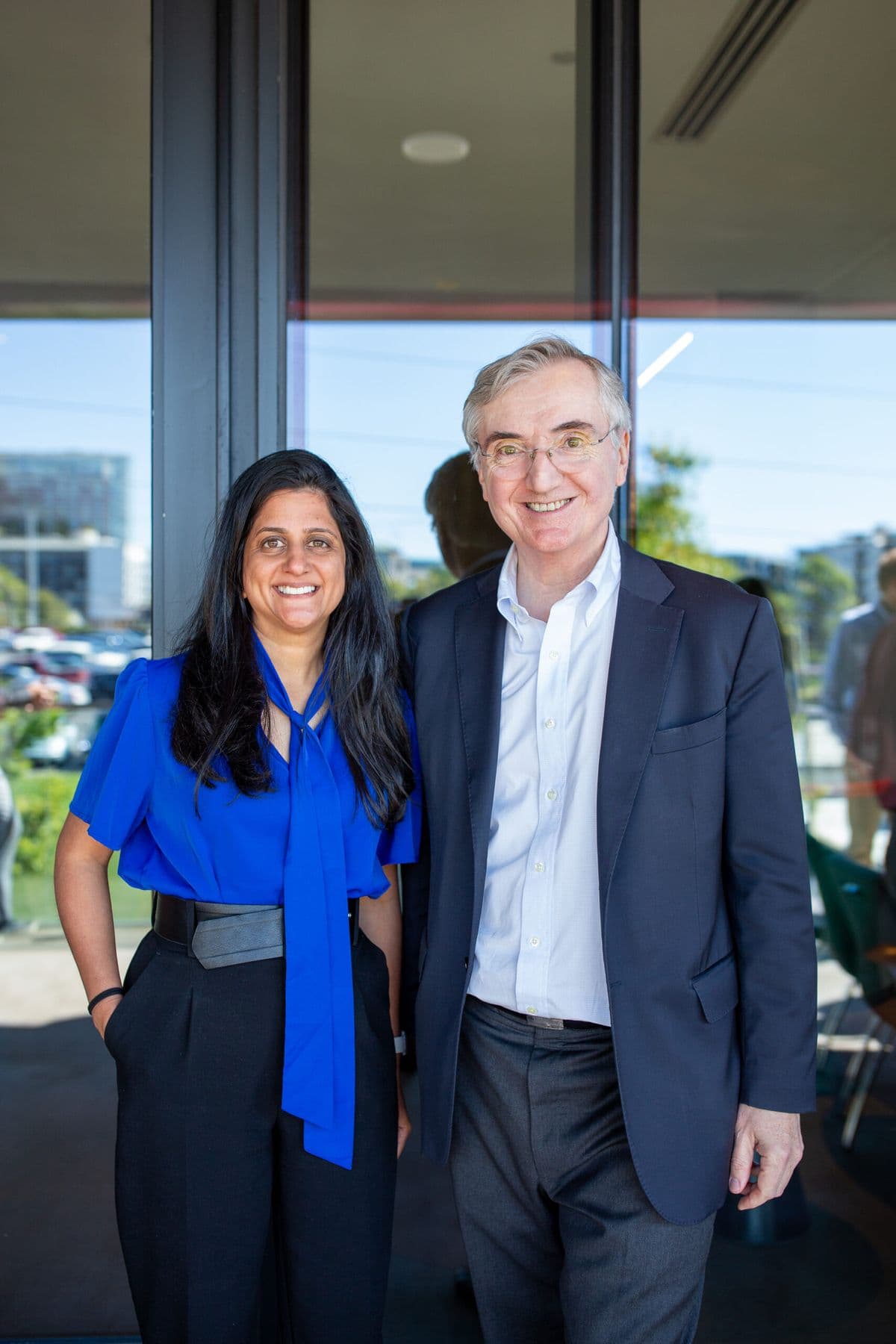The rise of generative AI has lit a fire under HR and learning leaders, transforming once gobsmacked tech conversations into high-stakes strategic-planning sessions. The question now isn’t whether AI will change the world of work, but how profoundly it will reshape the very DNA of workers and their organizations.
Yet, as leaders begin their journeys into this new frontier, the full promise of AI remains elusive. Joseph Fuller, a professor at Harvard Business School, offered a candid analysis of this crucible moment during a speech at Guild’s Opportunity Summit 2024 this month in Nashville.
His remarks, delivered with a mix of optimism and caution, suggest that while the transformative power of generative AI is undeniable, most organizations simply aren’t ready to harness it effectively. What’s worse, many are asking the wrong questions. Organizations are trying to retrofit a revolutionary technology into existing systems – rather than imagining what entirely new processes could look like.
“I am willing to wager the vast majority represented here today thinks about this incorrectly,” Fuller said. “[Senior management] keeps asking me, ‘how can we use generative AI to improve our current process?’ Wrong question. This is electricity. This is not a new steam engine. The right question is: ‘How do I configure my processes in the future to make the most of what this will do for me?’”
The following are highlights of Fuller’s presentation, coupled with key questions leaders should be asking to better understand – and catch up in – AI.
Gaps Are Widening.
Fuller opened by acknowledging what many leaders are quickly coming to grips with: Generative AI adoption is surging. Over the last year, the number of companies employing this technology has doubled—from a third to two-thirds of businesses. The workforce data corroborates this. Jobs requiring AI expertise now command substantial wage premiums, signaling the perceived value of these skills in the marketplace.
However, Fuller urged executives to recognize a critical gap between technological capability and organizational readiness.
“Generative AI is the single most important tool for enhancing productivity since alternating current,” Fuller asserted. Despite its potential, however, most companies have allocated only a fraction of their IT budgets to generative AI.
“This is electricity. This is not a new steam engine.”
- Harvard professor Joseph Fuller
This mismatch isn’t simply one of resources but of mindset. Fuller explained that corporate IT budgets move “at the rate of glaciers,” unable to pivot rapidly to accommodate new technologies that evolve as quickly as AI. He likened the lumbering nature of budget cycles to the installation of old software systems. This incremental approach won’t work with AI, Fuller said. AI often has a technological “half-life” as short as the time it takes to master it.
Key questions to ask:
Why are we doing the work we’re doing? Why now?
Is our investment in AI-driven skills development effective to accomplish this work that we’re doing today? What about in five years?
HR’s Biggest Shortfall: Not Investing Enough in People
Indeed, the most striking element of Fuller’s argument doubled as a call to action for HR and learning leaders. The biggest barrier to AI’s success, he said, isn’t the technology itself—it’s people. AI tools may be growing in power and sophistication, but organizations aren’t investing enough in training their employees to use them effectively.
One important question to ask is, what skills are you investing in for your people in this new AI era? Guild CEO Bijal Shah has called for investment in durable skills like critical thinking, creativity, and emotional intelligence. These are essential qualities that help all workers, from those on the front line to middle-skill and back-office workers. And these skills drive businesses forward with better decisions, new ideas, and stronger results.
Fuller, for his part, called out the growing disparity between the technical capabilities of AI and the human capacity to take advantage of them. Without sufficient training, the very tools meant to enhance productivity could backfire. Fuller recounted experiments conducted at Harvard, where students with access to generative AI showed marked improvements in their work — but only when they received proper guidance in using the tools. The results were staggering: those who received just basic instruction in prompt engineering — a skill crucial to maximizing AI outputs—produced higher-quality work. However, they also occasionally fell prey to overconfidence in the technology.
This underscores a larger issue Fuller raised: AI is fallible. While tools like ChatGPT can help workers perform tasks faster and with greater accuracy, they can also generate answers that have a ring of truth but are in fact wrong. Fuller compared this tendency to “confabulation,” a subtle but dangerous flaw in AI systems that can trick even smart, educated users into accepting erroneous outputs.
Key questions to ask:
Do our people have the skills to work alongside and get the most value out of AI?
What skills are we investing in for our people in this new AI era?
Do we have a system in place to continuously audit the skills needed to ensure AI outputs are right and ethical?
AI Is Exposing Organizational and Structural Problems.
Notably, organizations are investing in AI too narrowly. Sectors like technology, professional services, and financial services dominate adoption, while functions such as customer-facing roles and core technology infrastructure take precedence. For all the talk of AI revolutionizing industries, the reality is that most companies are deploying it too cautiously, concentrating efforts on only one or two functions. The reason for this? Fuller pointed to the “runaway train” effect: AI’s rapid development, coupled with poor data quality and shortcomings of tech-implementation vendors, is making it hard for organizations to keep up.
“A lot of the data is crap,” Fuller said. Companies’ data lakes are often full of unstructured or poorly tagged information. Worse still, major enterprise platforms aren’t fully prepared to cooperate with AI in a way that would allow seamless integration.
Key questions to ask:
What is our strategy for collecting and analyzing data today?
Are our partners aligned with our vision for the future?
AI Will Disrupt All Jobs - Especially High-paying Ones.
At the heart of Fuller’s insights was a broad warning: AI is going to fundamentally reshape the workforce, and businesses that fail to adapt will be left behind. He pointed to fields like software development, where AI tools like Copilot are already responsible for writing 50% of the code produced in the United States over the last nine months. The productivity gains are staggering, and they’re not confined to the tech sector. Fuller highlighted similar gains in call centers, where AI-assisted workers are significantly more productive than their peers. The important point here is that this transformation won’t be evenly distributed. High-paying jobs, especially those that involve routine cognitive tasks, are the most at risk of being disrupted.
Without question, the implications for industries ranging from finance to law are profound. Fuller pointed to research indicating that as much as 85% of the work done by entry-level financial analysts could be displaced by AI in the near future. This, Fuller argued, will require a complete rethinking of corporate structures, hiring practices, and training programs.
Key questions to ask:
What tasks are being replaced by AI today?
What tasks will be replaced by AI in the next five years?
What does success look like for our organization and our people? And how do we engineer a strategy to ensure people have the skills required to be successful and drive success for the organization?
What else could we do to achieve more, better, faster?
A Future of Opportunity — and Risk
Fuller concluded on a hopeful note, framing AI as a great equalizer with the potential to boost productivity and create new opportunities for workers. But realizing this potential will require leaders to rethink their approach, not just to technology, but to people. Organizations that embrace AI with a focus on developing human skills — particularly social skills — will thrive in the new landscape.
Those that cling to old models, trying to squeeze AI into outdated systems, will struggle. For Fuller, the key is a shift in perspective. AI isn’t just another tool; it’s a transformative force that requires companies to reimagine how they operate from the ground up. It’s not a better steam engine—it’s electricity. And those who can harness its power effectively will be the ones who shape the future.
Key questions to ask:
What “durable” and soft skills does the organization need today – and in five years?
Are we good at recognizing and training for soft skills?
What changes should we make to our learning and development strategy to equip our people with the right soft skills?
Can we compete today on soft skills?
The bottom line: Being a good leader is about asking the right questions. In doing so, you raise your organization’s collective ability to be strategic and workers’ ability to thrive in an AI future. As Fuller makes clear, the more competent you become in asking these questions, the better positioned you are to drive progress for your people and your organization.



